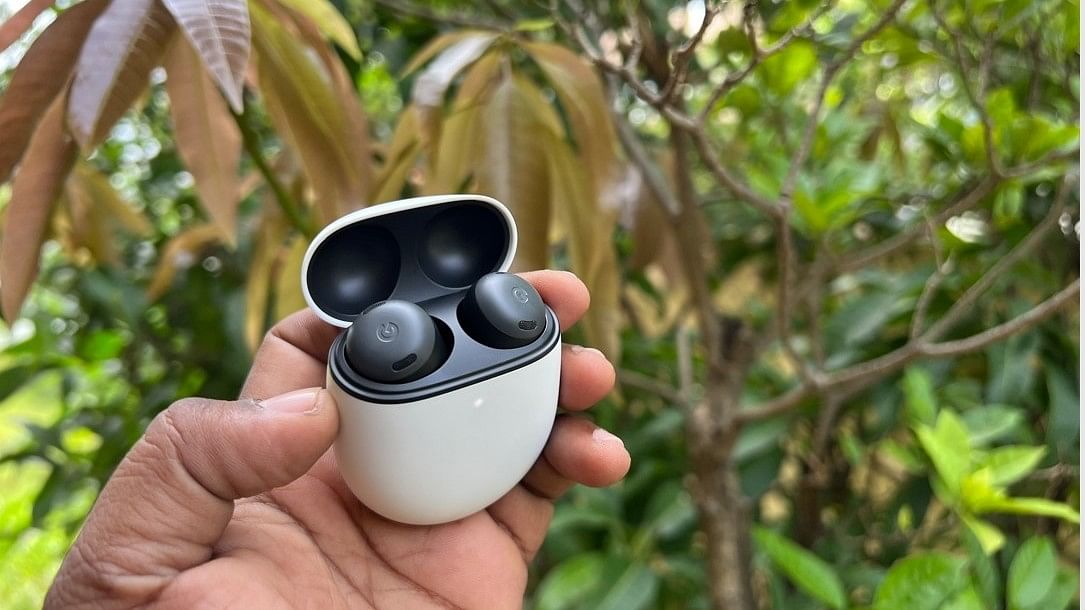
Google Pixel Buds Pro.
Credit: DH Photo/KVN Rohit
During the Covid-19 outbreak and lockdowns, many people managed to get their office work done with limited capacity on their personal laptops and phones, but they had a tough time getting medical devices to monitor Sp02 (blood-oxygen), greedy sellers hoarded them and sold for higher price.
After learning lessons from the pandemic, technology majors have introduced SpO2 readers, temperature sensors on smart watches and some even put them on smartphones (Pixel) too.
However, photoplethysmograms (PPG) and electrocardiograms (ECG) and other advanced sensors are said to be expensives and take up more space in compact devices such as smartwatches.
Now, Google researchers have come up with a cost effective technique to enable regular True Wireless Stereo (TWS) earphones with Active Noise Cancellation (ANC) feature to read critical biosignal such as heart rate.
With a software update to test TWS earphones, scientists used audioplethysmography (APG) technique that uses ultrasound to measure heart rate.
APG sends a low intensity ultrasound transmitting wave (TX wave) using an ANC headphone's speakers and collects the receiving wave (RX wave) via the on-board feedback microphones. The APG signal is a pulse-like waveform that synchronizes with heartbeat and reveals rich cardiac information, such as dicrotic notches.
The auditory canal receives its blood supply from the arteria auricularis profunda, also known as the deep ear artery and they let out low-intensity ultrasound signal inside of the ear canal. Here, tiny microphone that helps make ANC work on earphones, to detect skin surface perturbations as blood pumps through it.
With this method, Google researchers were able to read heart rate. The median error rate for heart rate and heart rate variability was said to be 3.21 percent and 2.70 percent, respectively.
The results show the new APG technique used in earphones are very promising.
However, we are not sure if Google has any immediate plans to turn their Pixel Buds Pro earphones into a medical device just yet.
Get the latest news on new launches, gadget reviews, apps, cybersecurity, and more on personal technology only on DH Tech